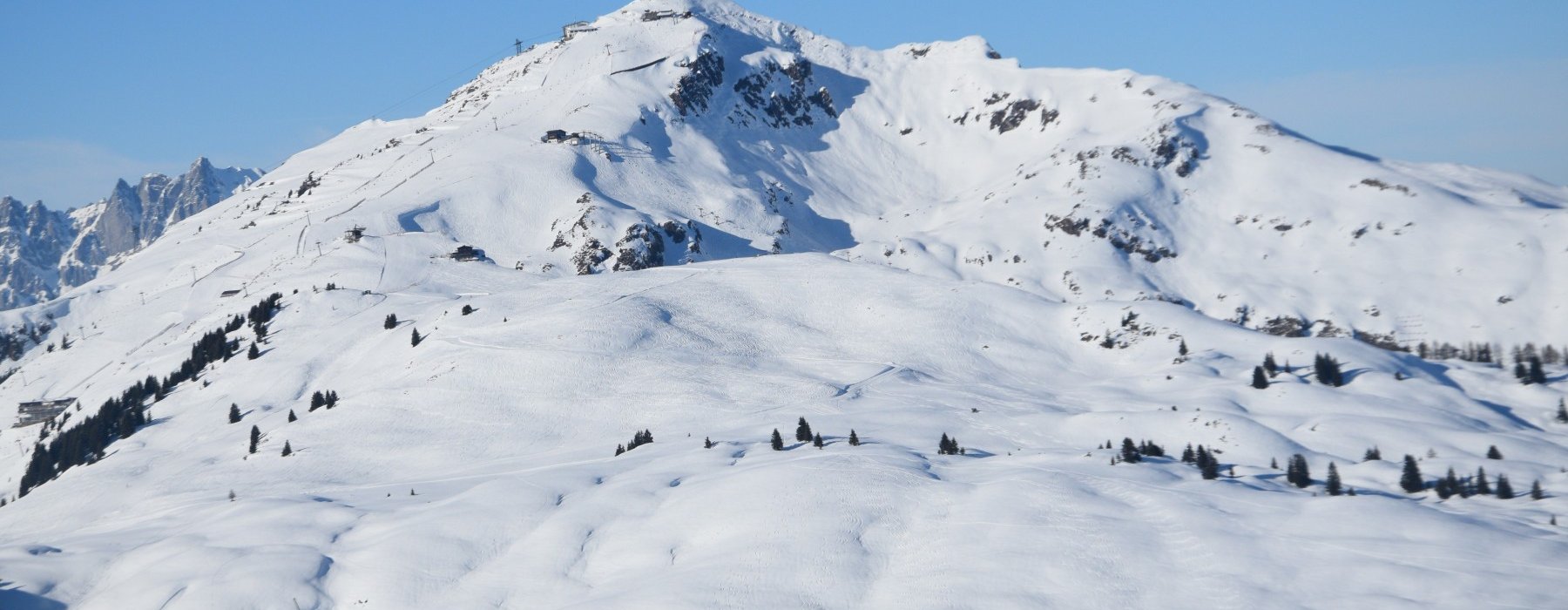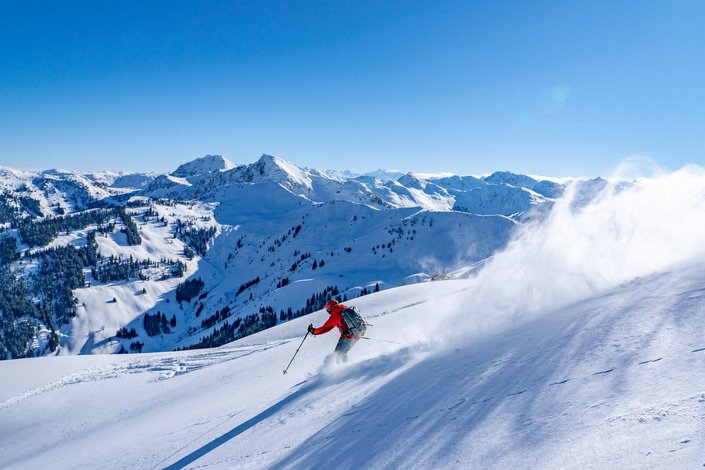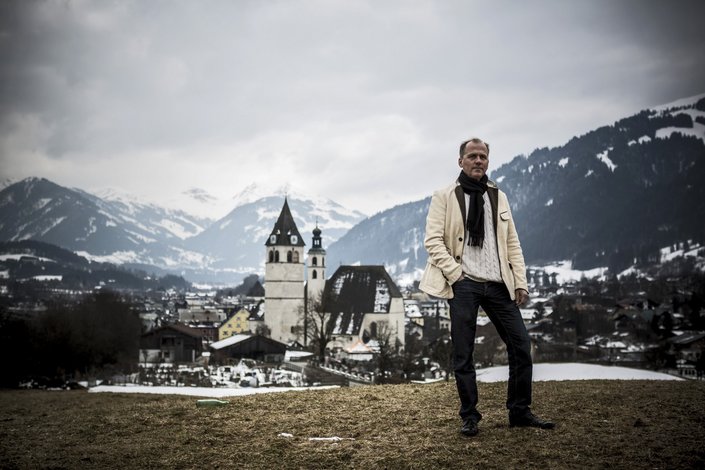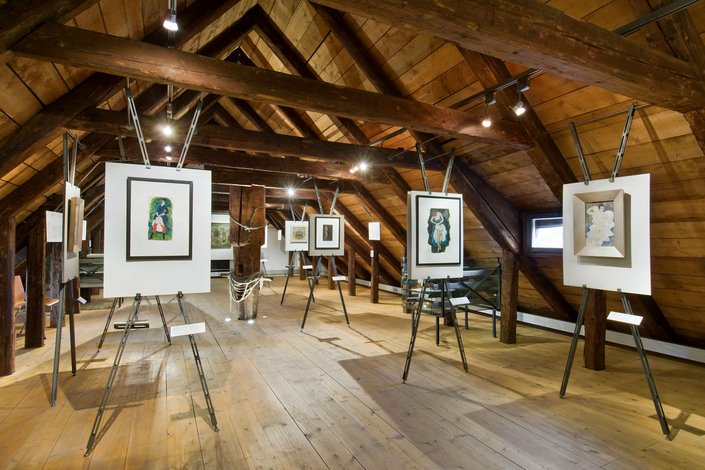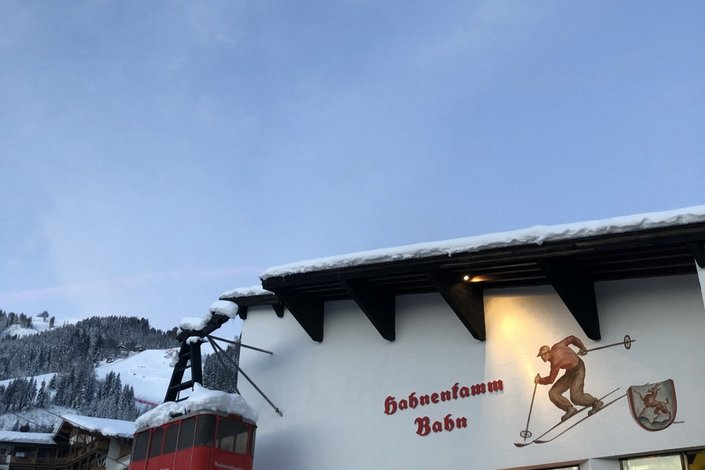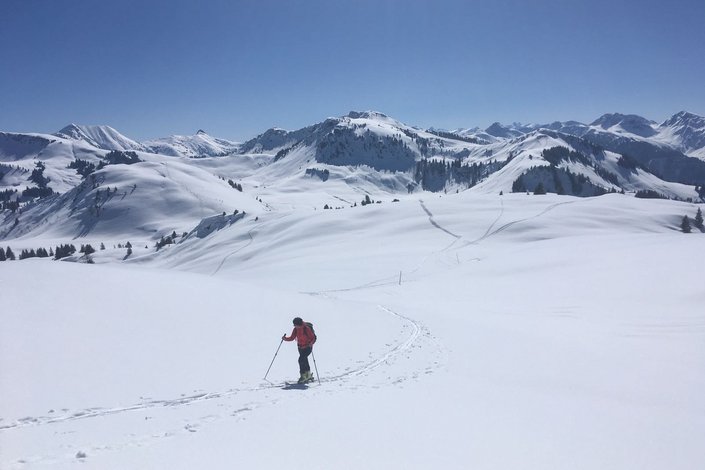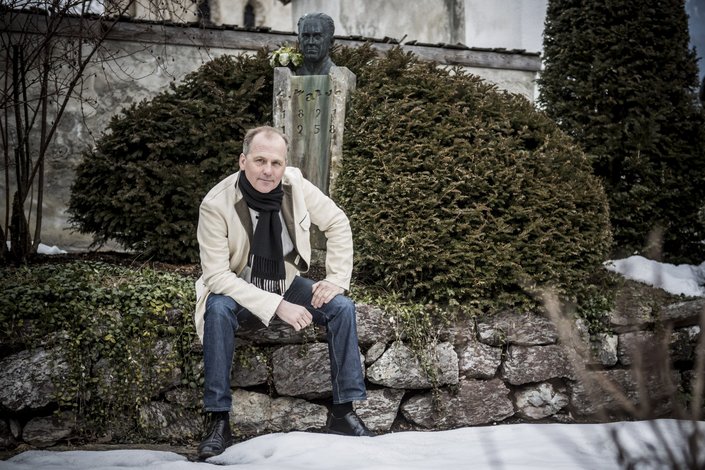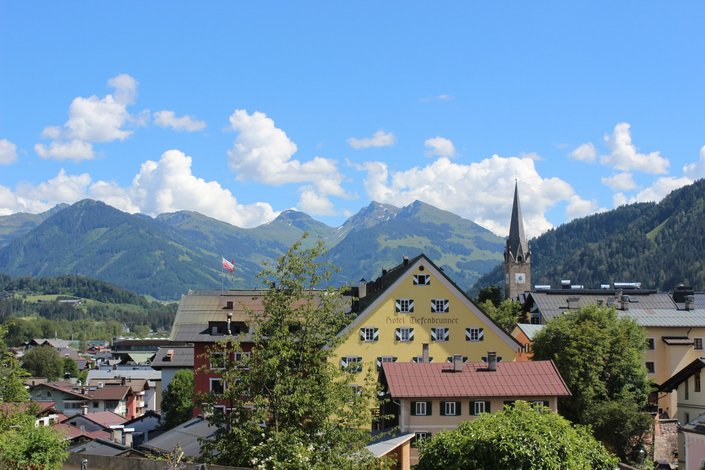The famous Kitzbühel painter Alfons Walde
When you walk through Kitzbühel, you can't miss the pretty pastel-colored houses in the town center. They have not changed since the 1930s and will probably remain so in the future. This is only a small part of the cultural heritage of Alfons Walde. The famous Kitzbühel painter and architect, he is said to have invented Kitzbühel.
The well-known Kitzbühel logo - the chamois was designed by Alfons Walde
It is not without reason that Kitzbühel can be called Walde country: The well-known Kitzbühel logo - the chamois in elegant red - designed in 1931 for the ski club, was also created by Alfons Walde, as was the mountain railway station on the legendary Hahnenkamm. Alfons Walde worked as a cultural officer and was sometimes responsible for the specifications regarding the color design of the houses in the center of town. These have since become a landmark in Kitzbühel. Walde was actually a trained architect and earned his living by painting. Landscape paintings in which he captured a wide variety of perspectives, from the local farmer in the field to the skiing winter guests, he captured on canvas with his unique skill.
From alpine landscape to female curves
Some of them were also invited to his infamous parties. "Up there, in his studio," says Michael Walde-Berger, showing us a yellow house from which his grandfather also used the church opposite as a frequent motif. The painter was known to be attracted by female curves at least as much as those of the alpine landscape. Along with snow-covered mountains, women were his favorite subject, although his first nude exhibition in the 1920s was virtually torn apart by the critics.
The deep emotional bond to the land is shared by grandson and grandfather. Alfons Walde grew up in Kitzbühel. He was born in 1891. The son of a school principal, he worked his way up through talent and social skills. "What connects me with my grandfather is the search for truthfulness. And its realization in art." In Walde's paintings, this is revealed in the play of light, perspective and depth and the almost non-existent faces of his protagonists.
Painter, architect and businessman
"When I prepare for a role, I also focus on my fixed accents that seem important to me. The rest develops through the viewer's imagination," Walde-Berger describes his experience at the Lee Strasberg School in New York in the 1980s. "Good acting feeds on true feelings. Just like my grandfather with his painting, I want to feel my vocation through me, in me, in all authenticity," Michael Walde-Berger tells us in a firm voice.
Alfons Walde was also a good businessman, because he knew how to sell his paintings best. To do this, he liked to use his imagination, and every now and then he would even go crazy on a mountain. This is how he realized his ideas on the canvas. His paintings give the viewer a sublime feeling, which is sometimes due to the artist's preference for painting from a bird's eye view. "The different shades of blue in the sky. The nuances of the snow... I think he has spoken from the soul of many people there," sums up Michael Walde-Berger.
At home in Kitzbühel
After graduating from the Technical University in Vienna and his military service in World War I, Alfons Walde moved back to his homeland. Despite connections to artists such as Klimt and Schiele, whose influences can be found in his work, he found his own personal freedom far away from the city. In Kitzbühel he was able to "do his thing, because he was not someone who conformed".
The mundane Kitzbühel
In addition to his studio, Walde also had a hut on the Hahnenkamm, where he painted and experimented with sexual openness in the name of art. Documented by a large number of photos, which are in Walde's estate. A bored artist is certainly a bad artist, and so behind Walde's work is his (life) desire as the driving creative force. From which he drew endless inspiration, as well as his fascination with the richness of women's forms, which he recognized in nature. Walde's paintings such as Peasant Sunday and Ascent of the Skiers now command six-figure sums. "His concept of free love didn't quite work out, though," Walde-Berger smiles, "he was married three times." Although the boards of the international stage beckon, Michael Walde-Berger is also drawn back to Kitzbühel time and again. "I spent my childhood here, it was paradise," Walde-Berger laughs. This created for him above all a relationship with the people - "the binding, which you don't perceive at first moment, because you see the glamorous Kitzbühel".
"I'm very sorry I didn't know him," the actor says of his grandfather. Through his many diaries, letters and joke collections, he had become posthumously familiar. "You read that and you feel a kinship because you know the Schmäh. But he was also a very critical person. I think we would have had a great time together... "Even though the actor considers it a great fortune to be born into a family of artists, "in the end, you can only be proud of what you accomplish yourself. The beauty of my grandfather's legacy is the idealistic, because there are also an incredible amount of inner values in his work."
A collection of works, Alfons Walde (1891-1958) can be admired in the Museum Kitzbühel.
